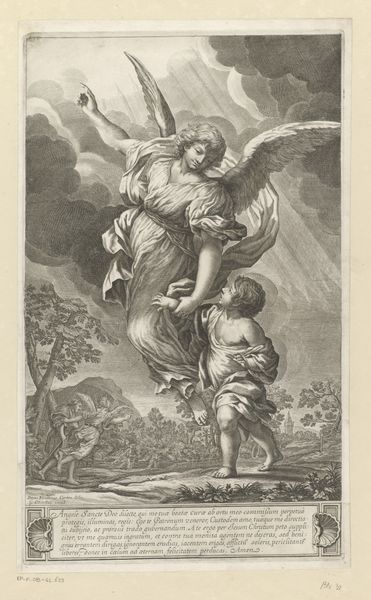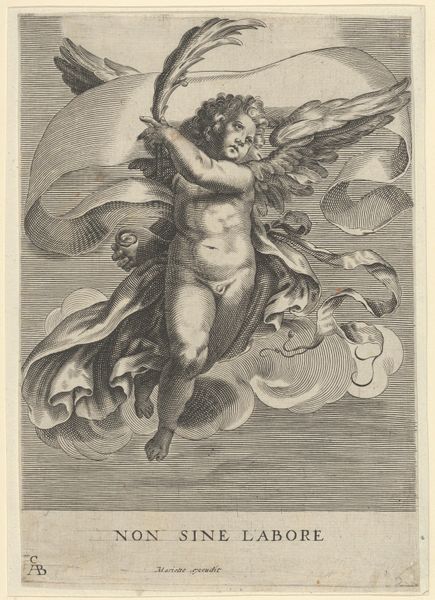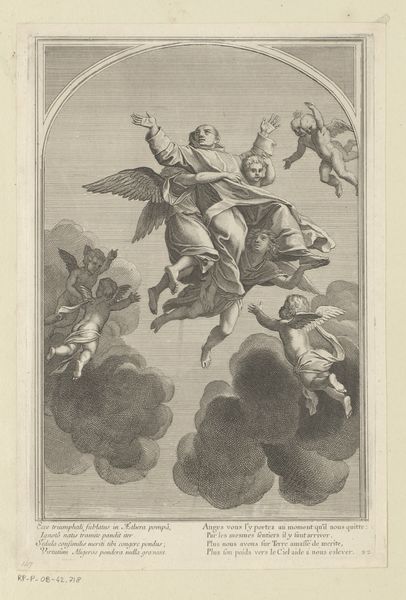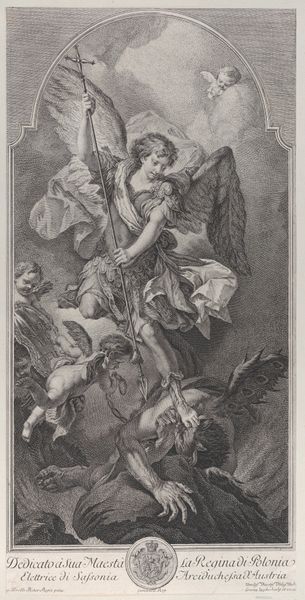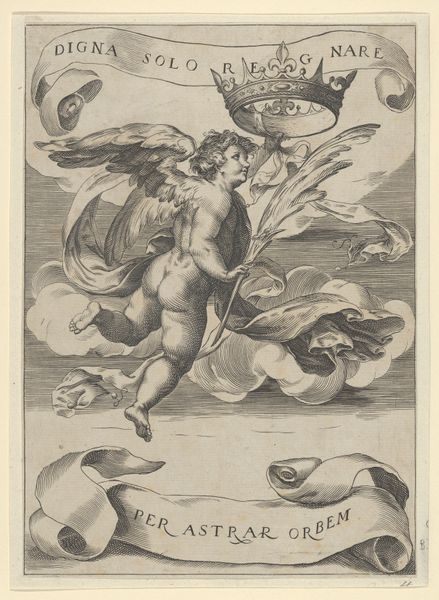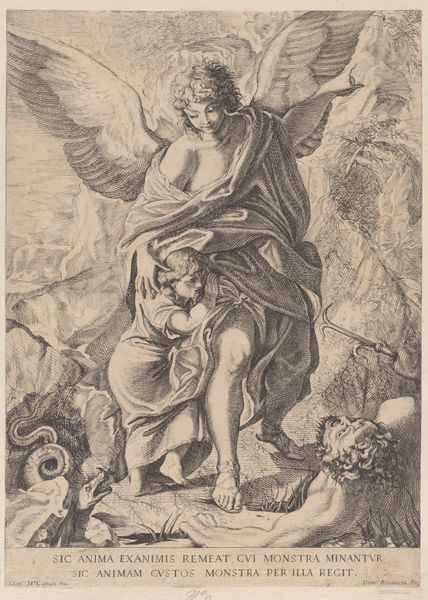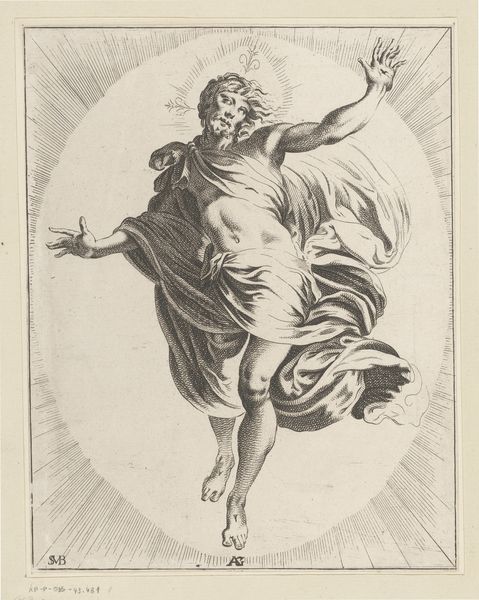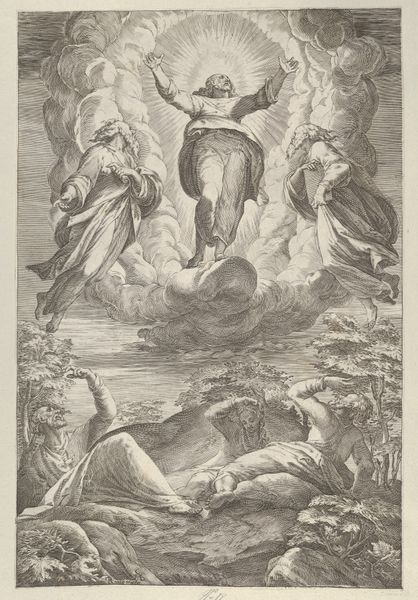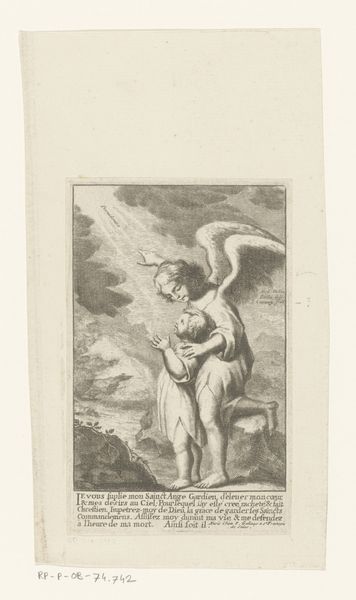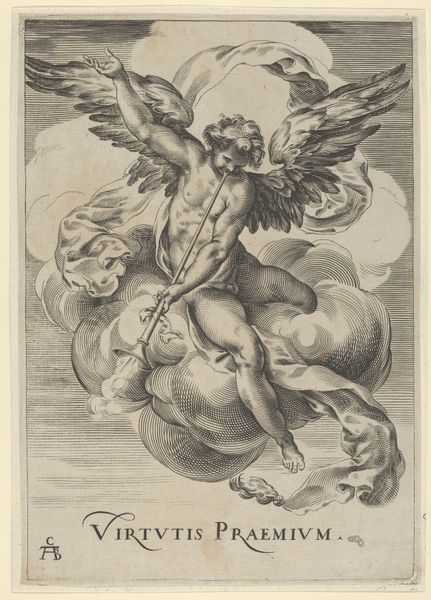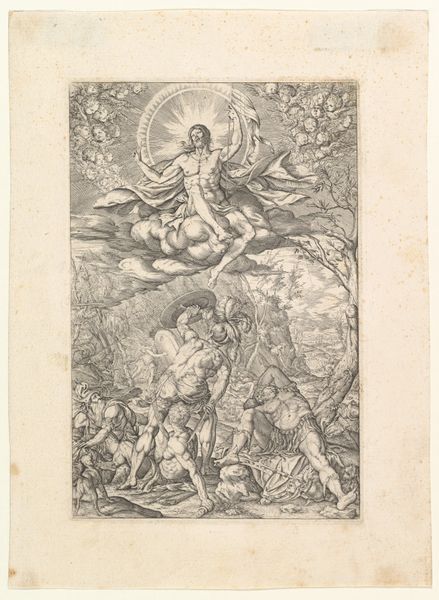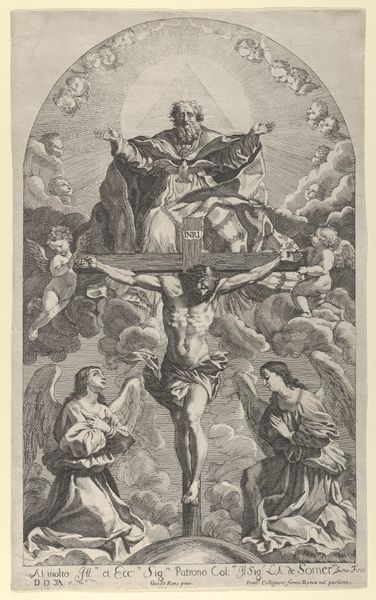
engraving
#
allegory
#
baroque
#
old engraving style
#
figuration
#
line
#
history-painting
#
nude
#
engraving
Dimensions: height 375 mm, width 281 mm
Copyright: Rijks Museum: Open Domain
Francesco Antonio Meloni created this print called 'Aurora' sometime around the turn of the 18th century. It depicts the Roman goddess of dawn and as we consider it, we need to remember the social role of art in Baroque Italy. The Catholic Church was a major patron, commissioning art to inspire and awe the faithful. Religious and mythological subjects were vehicles for expressing power, beauty, and ideal virtues. Meloni worked in this world, where artists were trained in academies that promoted specific aesthetic standards. Notice how Aurora is idealized, floating amidst clouds and light, attended by an angel pouring dew. The flowing lines and delicate details reflect the Baroque emphasis on dynamism and emotional impact, which itself was a visual language developed by and for the institutions of power at the time. To truly understand this image, we might research the patronage networks of the day and the specific visual conventions that shaped its meaning for its original audience.
Comments
No comments
Be the first to comment and join the conversation on the ultimate creative platform.

